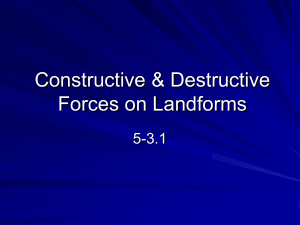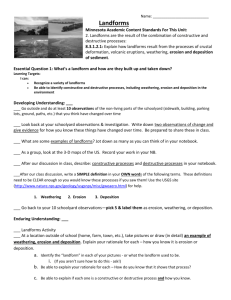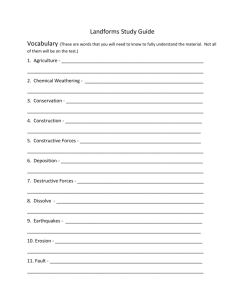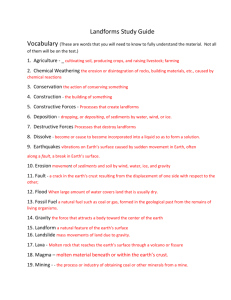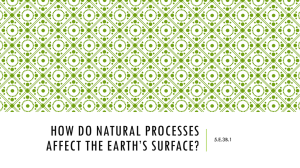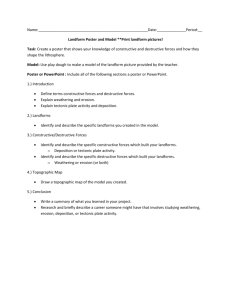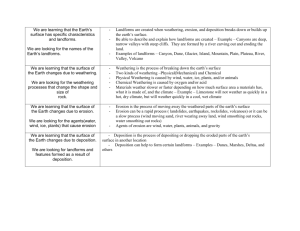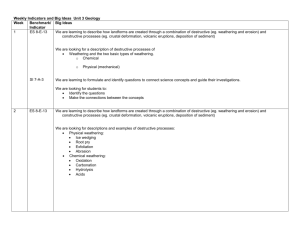File
advertisement
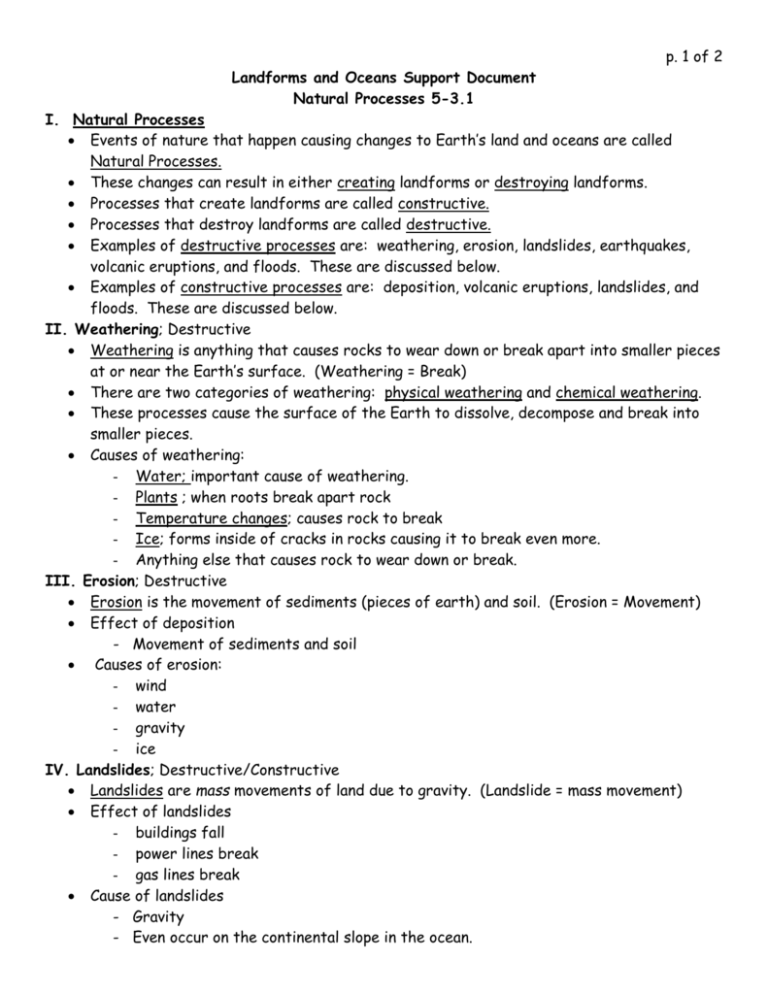
Landforms and Oceans Support Document Natural Processes 5-3.1 p. 1 of 2 I. Natural Processes Events of nature that happen causing changes to Earth’s land and oceans are called Natural Processes. These changes can result in either creating landforms or destroying landforms. Processes that create landforms are called constructive. Processes that destroy landforms are called destructive. Examples of destructive processes are: weathering, erosion, landslides, earthquakes, volcanic eruptions, and floods. These are discussed below. Examples of constructive processes are: deposition, volcanic eruptions, landslides, and floods. These are discussed below. II. Weathering; Destructive Weathering is anything that causes rocks to wear down or break apart into smaller pieces at or near the Earth’s surface. (Weathering = Break) There are two categories of weathering: physical weathering and chemical weathering. These processes cause the surface of the Earth to dissolve, decompose and break into smaller pieces. Causes of weathering: - Water; important cause of weathering. - Plants ; when roots break apart rock - Temperature changes; causes rock to break - Ice; forms inside of cracks in rocks causing it to break even more. - Anything else that causes rock to wear down or break. III. Erosion; Destructive Erosion is the movement of sediments (pieces of earth) and soil. (Erosion = Movement) Effect of deposition - Movement of sediments and soil Causes of erosion: - wind - water - gravity - ice IV. Landslides; Destructive/Constructive Landslides are mass movements of land due to gravity. (Landslide = mass movement) Effect of landslides - buildings fall - power lines break - gas lines break Cause of landslides - Gravity - Even occur on the continental slope in the ocean. p. 2 of 2 V. Earthquakes; Destructive Earthquakes are vibrations on Earth’s surface caused by sudden movement in Earth. Effects of earthquakes - Sometimes little damage is done/sometimes a lot of damage. - landslides (if a large earthquake) - Tsunamis or HUGE waves (if earthquake is under the ocean) that destroy land and cause great damage if they come ashore. Causes of earthquakes - sudden movement in earth - faults ( a break in Earth’s surface) – these often cause the sudden movement VI. Floods; Constructive and Destructive Floods occur when a large amount of water covers land that is usually dry. Effect of floods - rapid erosion, moving soil and sediments away (destructive) - rich soil deposits left behind when flood recedes (constructive) Cause of flooding VII. Deposition; Constructive Deposition is the dropping, or depositing of sediments. (Deposition = Dropping / Building up) Effect of deposition - New land building up on Earth’s surface Causes of deposition - Water; ex: shells on the beach are deposition by ocean waves or delta at the end of a river. - Wind ; ex: sand dunes on the desert & beach are deposition by wind - Ice : ex: glaciers push debris as they slide, causing it to build up VIII. Volcanic Eruptions; Constructive/Destructive Volcanoes are mountains with openings in Earth’s crust Seamounts are volcanoes that are built up under the ocean- if it rises above ocean surface it causes seamounts ex: Japan, Hawaii Volcanic Eruptions occur when magma, gases, and ash reach Earth’s surface. Effect of volcanic eruptions - Changes in Earth’s surface - changes in top of the mountain (volcano)Constructive- top built up Destructive- exploded off - lava and ash can destroy forests and bury fields - can cause changes in weather patterns Under the ocean
